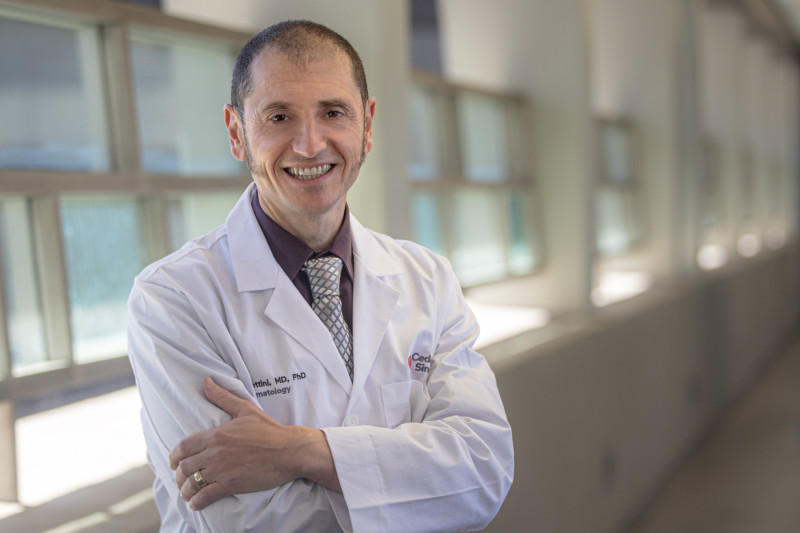Scleroderma Awareness Month
Cedars-Sinai’s Autoimmunity Investigators Focus on Improving the Lives of Scleroderma Patients
Scleroderma is an autoimmune disease characterized by thickening and scarring of the skin and vital organs, and the narrowing of the blood vessels which lead to poor circulation.
An estimated 100,000 people in the U.S. are living with scleroderma, and there are about 7,000 to 8,000 new cases every year. In advanced stages of systemic sclerosis, which disproportionately affects women, the chronic symptoms can lead to irreversible organ damage and death. There is no cure.
“Scleroderma is the epitome of complex autoimmune rheumatic disorders because it can affect any organ in the body. Scleroderma is a chronic illness that can place an incredible burden on patients and their families for a long period of time,” said Francesco Boin, MD, the chair of Rheumatology and director of the Scleroderma Program in the Kao Autoimmunity Institute at Cedars-Sinai.
Research That Benefits Patients
Cutting edge research is the best care we can offer scleroderma patients, said Boin, and leading that effort at Cedars-Sinai is Nunzio Bottini, MD, PhD, the director of the Kao Autoimmunity Institute.
“Our research priorities at the Kao Autoimmunity Institute are twofold: first, how to prevent, and hopefully reverse, the progression of fibrosis in patients with scleroderma, and secondly, we want to identify risk factors for the development of interstitial lung disease, a major complication of scleroderma, that can lead to an early death,” said Bottini.
A Super-Family of Enzymes
Groundbreaking research on the role a group of enzymes Bottini calls a “super-family,” protein tyrosine phosphatases (PTPs), has been a key focus of his work investigating the development of rheumatic diseases.
“PTPs have recently emerged as important drug targets for a multitude of diseases. For scleroderma, we want to better understand precisely how this family of enzymes regulates the progression of fibrosis, the production of excessive collagen that can scar and thicken tissue, a hallmark of scleroderma,” said Bottini, who has been continuously funded by the National Institutes of Health for autoimmune disease research since 2007.
Spatial Biology: Location Matters
Cells in the body exist in relationship to one another, they are not islands. Spatial biology explores how the neighborhood, the location of one cell within tissue relative to another, could affect cellular activity.
explores how the neighborhood, the location of one cell within tissue relative to another, could affect cellular activity.
“The fibroblast cell’s behavior is affected by different types of cells, including immune cells, that are located near it. Spatial biology has the potential to help us understand pathology in a new way. How might the behavior of the fibroblast be influenced by specific factors in the immune cells or by its location in the skin or the lungs? In autoimmune disorders, like scleroderma, that information could be a game changer,” said Bottini.
“All that we do at the Kao Institute is geared toward helping patients. That is the end goal. We study specimens graciously donated by our patients and we make our hypotheses about targets for potential therapies. Then we test the hypotheses and based on the results of the experiments, develop therapies tailored to patients with scleroderma. We want to enable personalized care.”
Autoimmune disorders affect 24 million adults and children in the U.S., according to the National Institutes of Health.
“Autoimmune diseases are a leading cause of death and disability. At the Kao Autoimmunity Institute, we want to bring top investigators and clinicians together and leverage the culture of scientific excellence and collaboration here. Our goal is to promote personalized medicine by developing novel, evidence-based therapies that can help patients,” said Bottini.
Read More on the Cedars-Sinai Blog: Lifelong Journey: A Scleroderma Patient and Her Doctor



